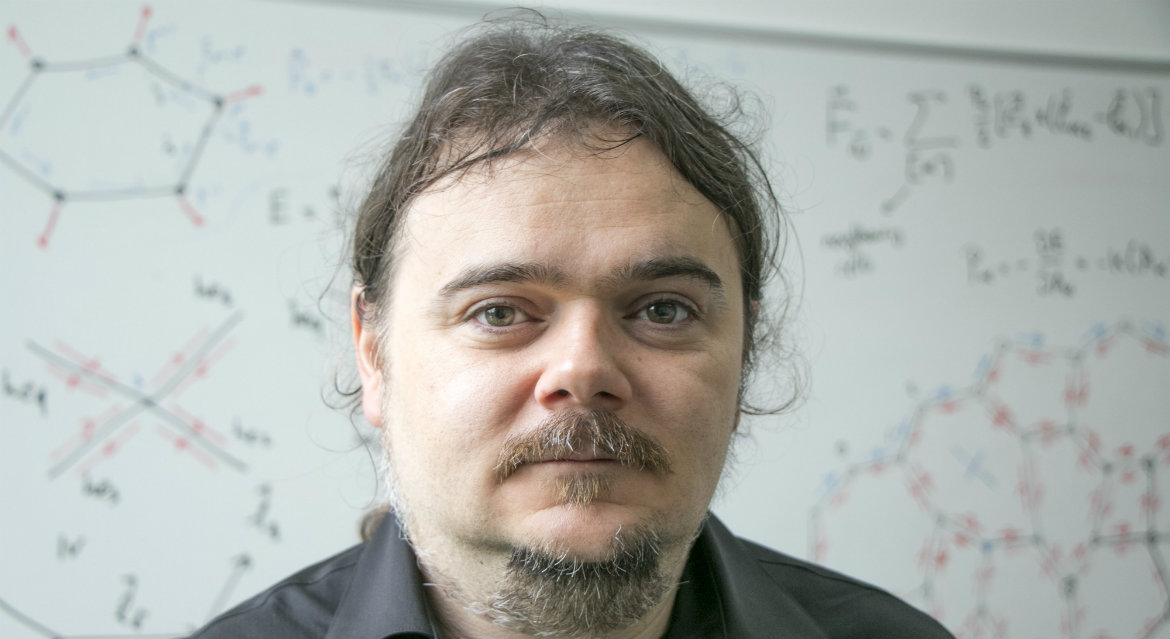‘Cellular mosh pit’ helps researchers understand tissue formation
Published On Sat 1 Jul 2017 by Grant Hill

Researchers led by the University of Dundee have developed a way of exploring a ‘cellular mosh pit’ that may shed light on processes such as embryo development, wound healing and cancer growth.
Working with colleagues at the University of Aberdeen, they have developed the Active Vertex Model (AVM), a new computational model that allows scientists to examine in greater depth than ever before how cells move in a variety of biological processes.
Epithelial tissues, such as the skin or lining of the internal organs, act as barriers to the environment. To form an effective barrier, cells in epithelia have to be closely packed together. These epithelial tissues are formed and shaped during embryonic development, while not disrupting the tissue’s connectivity.
This is achieved via carefully orchestrated exchanges between neighbours – so-called cell intercalations. These intercalations also play key roles during tissue repair and regeneration. The mechanisms behind intercalations – a process of fundamental importance for proper tissue function – are not fully understood.
The AVM will allow much larger areas of individual cells to be studied, almost 10 times the size previously possible. This will provide scientists with a greater understanding of these active systems and the mechanics of tissues, something has previously been likened to watching fans mosh away at gigs.
“Understanding the emergence of collective behaviour of cells in tissues is what our model is interested in explaining,” said lead author Dr Rastko Sknepnek, a lecturer in Physics within Dundee’s Division of Computational Biology. “This behaviour has hallmarks of an active system. Active systems can be a school of fish, a developing embryo or even a mosh pit at a rock concert, which is quite a well-known analogy among people working in this area.
“Each person in a mosh pit has their own choice on where to move but is also affected by those around them. If you compare the biology we are interested in with this scenario, each person is like a cell, and we have built a model that can look at the activity and movement of the people in the mosh pit.”
The AVM combines the physics of active systems, which is credited with describing behaviours of systems such as flocks of birds, schools of fish and human crowds, with the Vertex Model – commonly used to study mechanical properties of epithelial tissues. The AVM not only allows for very efficient computations but also incorporates the cell intercalation events in a natural way.
The interdisciplinary project combined the biological expertise of Professor Kees Weijer, from the University’s School of Life Sciences, with the modelling knowledge of Dr Sknepnek and Dr Silke Henkes, a lecturer in Physics at the Institute for Complex Systems and Mathematical Biology at the University of Aberdeen. Much of the work was carried out by Daniel Barton, a postgraduate student in Dr Sknepnek’s lab.
The next stage of the project will see the research team apply the model to Professor Weijer’s research on cell and tissue dynamics during embryogenesis, the process by which the embryo forms and develops.
“We will now carry out work with existing biological research that will to improve the model further,” said Dr Sknepnek. “We want to work with other researchers to expand the model to other systems, in particular curved surfaces such as those found in the gut.”
Owing to its efficiency, the AVM will allow researchers to explore cell motion patterns over previously inaccessible sizes, while retaining the resolution of individual cells. This may help understand how collectives of cells organise and control their behaviour at the scale of the entire tissue, providing new insights into processes such as development of embryos and cancer metastasis.
The AVM is publicly available under a non-restrictive open source licence and can downloaded at https://github.com/sknepneklab/SAMoS.
The research was funded by BBSRC and is published in the latest edition of the journal PLoS Computer Biology.
For media enquiries contact:
Grant Hill
Press Officer
University of Dundee
Nethergate, Dundee, DD1 4HN
Tel: +44 (0)1382 384768
Mobile: 07854 953277
Email: g.hill@dundee.ac.uk